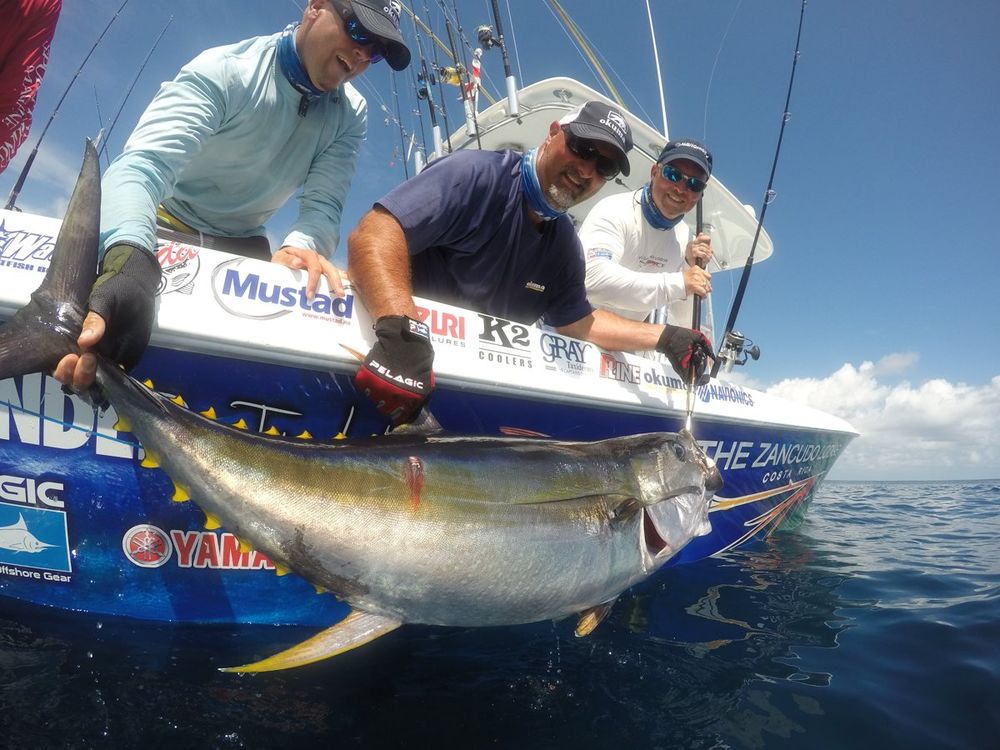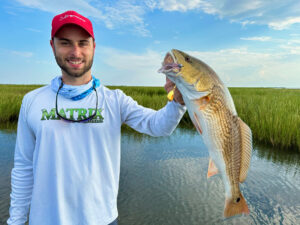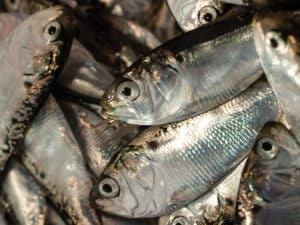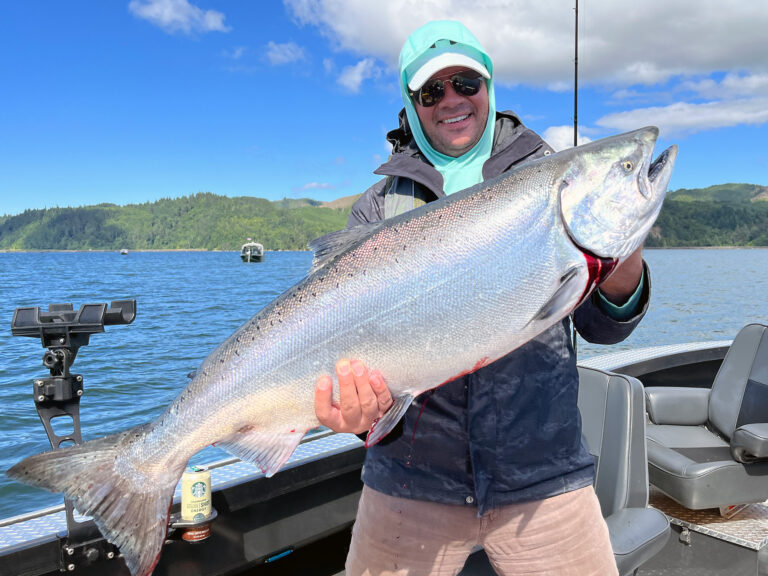The Right Leader for the Job
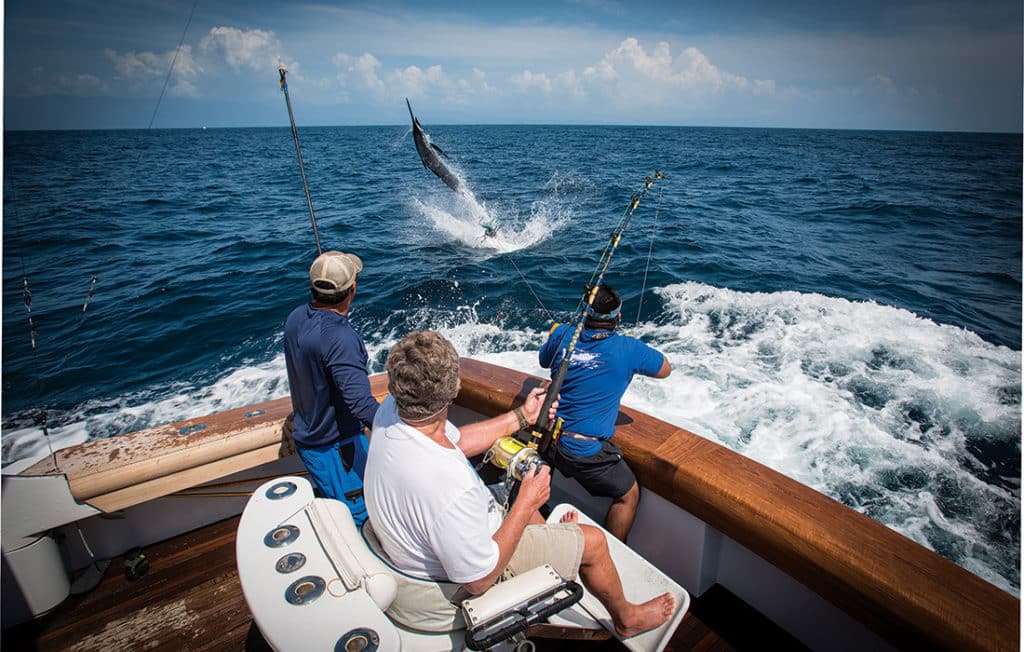
Diverse offshore-fishing styles ignited angler resourcefulness throughout the decades to produce innovative leader setups. See a need, fill a need. The ingenuity among experienced fishermen is ongoing, with captains quick to recognize and change tactics whenever better leader options are created. At many fishing destinations I visit, I often learn a fresh twist or new leader system from a local captain.
Many techniques are versatile, allowing offshore anglers across the globe to utilize the leader setups. Leaders from the past still have value today; new leader systems stretch the capabilities of today’s tackle. You’ll find both in this column. Below, three respected veteran captains describe tried-and-true leaders.
At least one of these leaders will almost certainly work for your preferred style of offshore hunting.
Trolling for Marlin
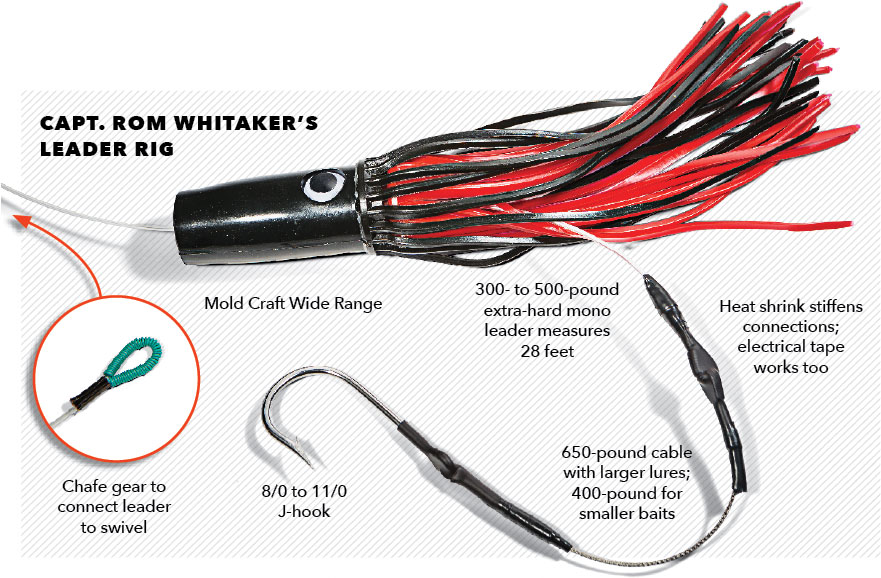
Capt. Rom Whitaker of Release Sportfishing in Hatteras, North Carolina, targets dolphin, wahoo, marlin and tuna off the Tar Heel coast. I wanted to know his leader rig for catching blue marlin.
“The leader combinations we use have been tested and improved many times over the years,” says Whitaker, “but one certainty about fishing is there’s always something new and better coming along, and you had better be ready for change.”
Whitaker sets out specific trolling spreads for tunas, white marlin and blue marlin, but here we highlight his tournament-winning blue marlin spread composed solely of lures.
Penn International 80s, packed with 130-pound braid and mono, are set out on Whitaker’s long outrigger lines. Specifically, for tournament fishing, he uses a 300-pound snapless ball-bearing swivel, and crimp connections for the main line and leader.
“I would recommend to those who use crimps to experiment with different crimps, crimpers and monofilament to find a combination that works for you,” he says. “There is an obvious difference when you start switching crimps and crimpers. If you put your leaders to the test, you want everything right.”
Whitaker’s leaders start with 300- to 550-pound Momoi Extra Hard, depending on the size of the lure. He keeps leader lengths at a standard 28 feet for tournament conformity. A single-hook cable rig with an 8/0 to 11/0 Owner Jobu or Gamakatsu Blade Point Tuna Hook connected to 650-pound stainless-steel cable finishes the rig. He uses the same leader setup on short and flat lines but swaps out 80s for 130s. Favorite baits include a Black Bart 1656 on the long rigger, a Mold Craft Wide Range on the short rigger, and a Bonz Agitator on the flat line.
“I like the bend of the hook to hang out of the skirt a half to three-quarter inches,” Whitaker says. “Depending on the size of lure, I try not to overwhelm the action by rigging too big.”
All-Purpose Bottomfishing
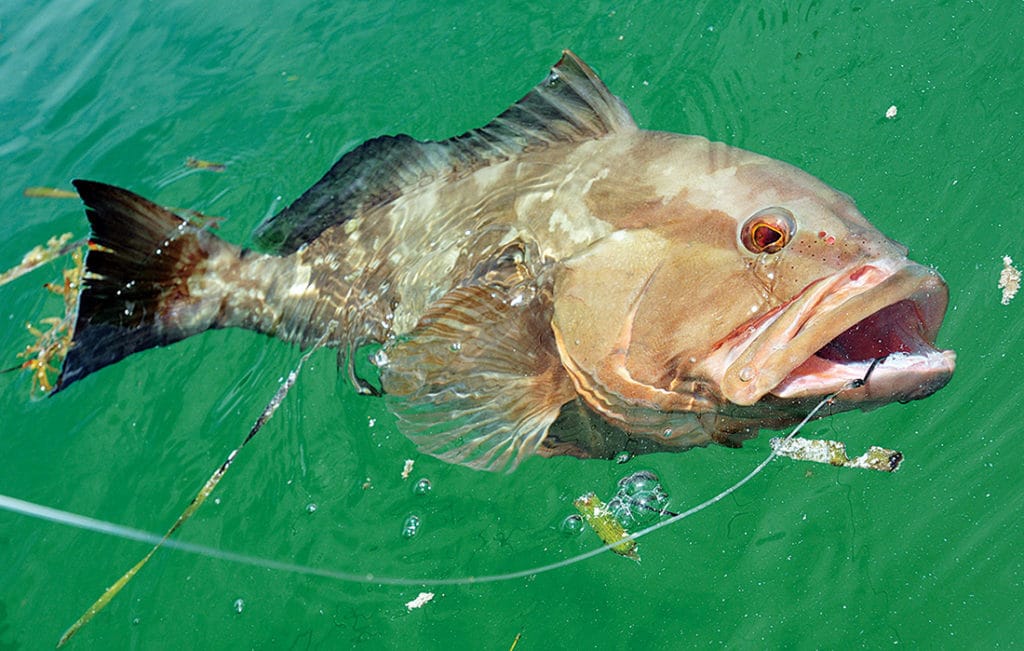
Fishing in Key West this past October, I noticed the bottomfishing rig that Capt. R.T. Trosset, of Spindrift Fishing, used to catch all types of groupers and snappers. I was lucky enough to join Fin-Nor’s Bob Bagby and Chris Littau on Trosset’s boat one day, testing the new Fin-Nor Primal lever drags (available summer 2017) and Mega Lite spinning reels.
The modest leader setup is a beefed‑up version of a freshwater drop-shot rig. I’ve fished sliding sinker rigs plenty, but this might be the simplest rig ever I’ve used to keep cut baits and live baits near, but not on, the bottom.
“My main setup is 30-pound Cortland Master Braid main line connected to 40-pound Ande fluoro-carbon leader,” says Trosset. “I tie a spider hitch in the braid and then a double uni-knot to the fluorocarbon. My leader length varies depending on the type of fish I’m targeting.”
For casting baits, Trosset might shorten his leader to the length of the rod. But bottomfishing doesn’t require casting, and extra leader length provides protection against structure, so he’ll measure off 15 feet of leader material.
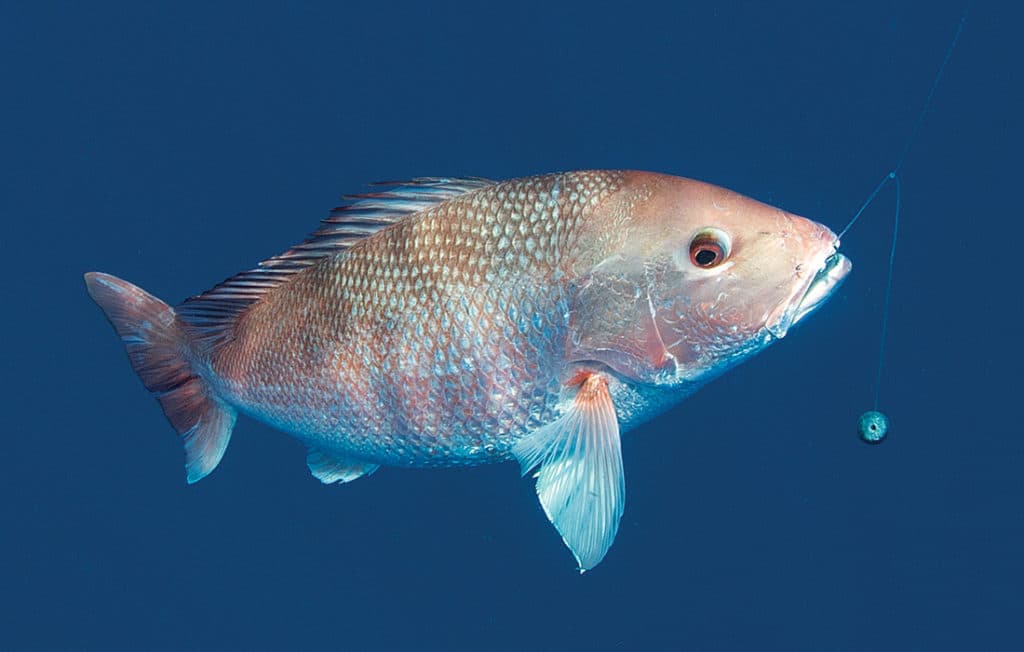
“My basic bottom leader rig in up to 60 feet of water is 10 to 15 feet of fluoro, with a double overhand loop 3 feet up from the sinker,” says Trosset. “The egg sinker is attached with an improved clinch knot.”
Trosset uses a 1/0 to 4/0 short-shank hook (such as a 9175 Mustad) in the Atlantic and a 1/0 to 4/0 circle hook in the Gulf of Mexico. To attach a hook, he pulls the loop through the hook eye, then the hook through the loop. The rig itself is similar to the dropper-loop rig used both offshore or even surf-fishing. If not familiar with a dropper-loop knot, check out our knot video online to see how the overhand and dropper loop knots are tied. Trosset was able to tie his rigs in a matter of seconds if a fish broke off.
On our trip, we landed red and black groupers, plus snappers. In some spots, Trosset also landed red snapper regularly on the rig. Minimal tying and minimal effort make this leader setup a cheap but effective option for natural-bait bottom-bouncers.
How to Tie the Dropper Loop Rig
Watch this video to learn how to tie two different variations of the dropper loop rig.
Casting for Tunas
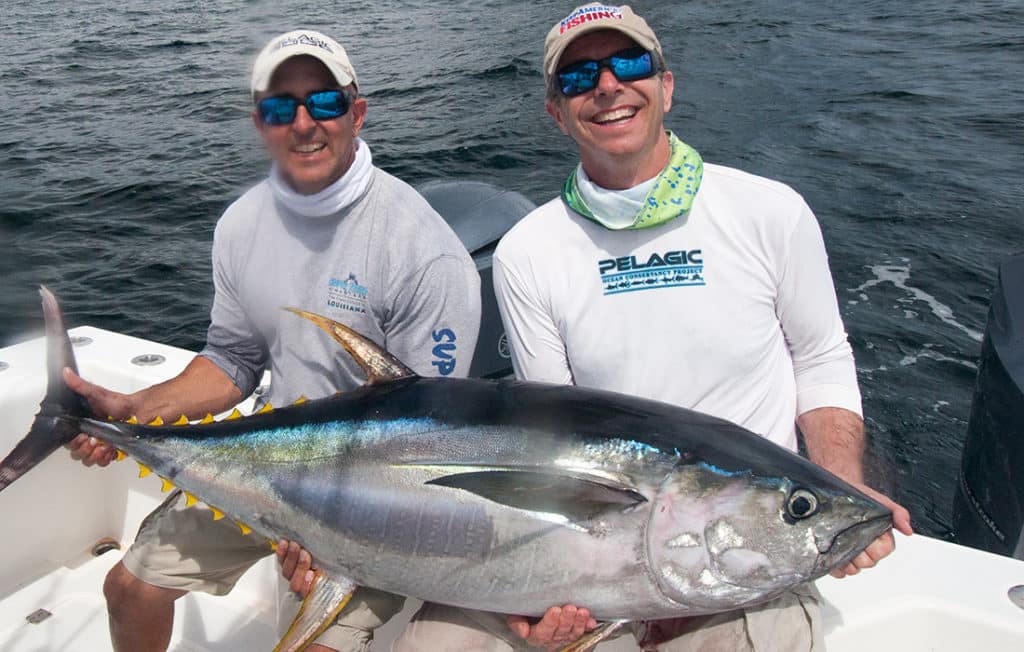
Capt. Jack Sprengel, who runs East Coast Charters out of various ports in New England, has been jigging, casting and popping for tunas since 2005.
“We knew braided line would be the answer to strength and capacity,” says Sprengel, “but in the early days, I had issues attaching a leader because most knots simply exploded when the tension caused braided line to cut through the fluorocarbon leader.”
The number of hookups he could expect in the earlier days was staggering, but the number of fish landed was laughable. During that time, Sprengel used 50- to 80-pound braid, connected to the leader via an Albright, Bristol or uni-to-uni-knot. Most times the knots would fail under the extreme pressures. He tried a Bimini twist to a swivel, with the leader crimped to the swivel — but the swivel made it hard to cast a long leader.
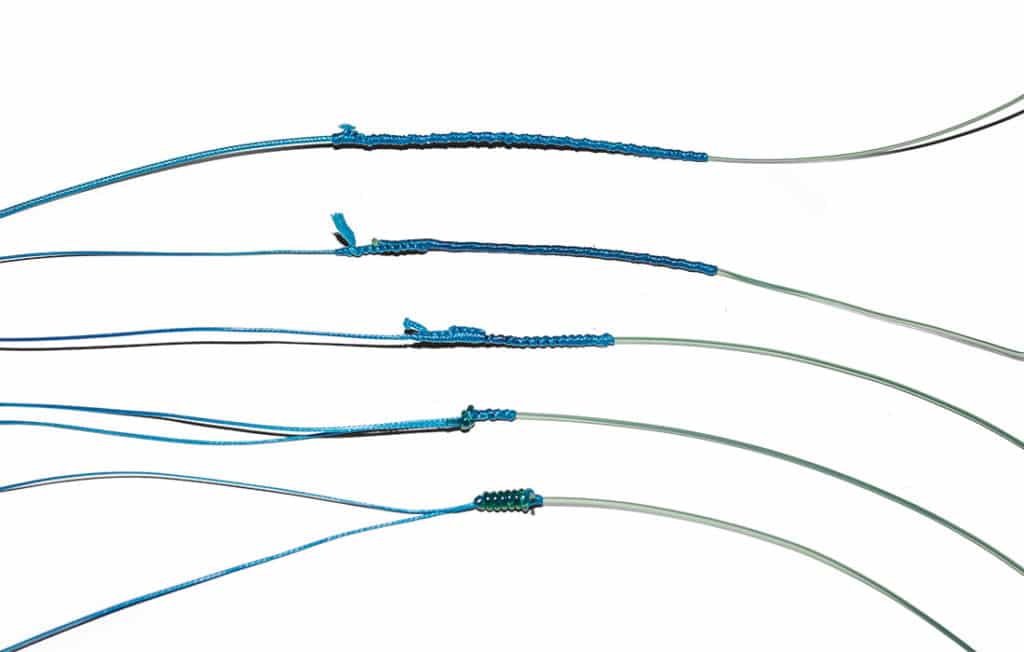
“Next, spliced leaders with hollow-core braid made it possible for us to jig with confidence,” says Sprengel. “While these systems were fantastic for vertical jigging, the large loops and the transition of soft loop-to-loop connections to rigid splice points created terrible wind knots when trying to cast through the guides on casts.”
Finally, Sprengel settled on two knots that seamlessly connect heavy braid to fluoro leader: the PR Bobbin and FG knots.
“These knots were something out of the future, and initially they were a little intimidating, but they totally revamped the confidence I had in using a knot to connect my main line to leader,” he says. “Over the past few seasons, I have adapted to the quicker method of tying the FG knot, by leaning the rod away for tension and weaving the fluoro around the braid.”
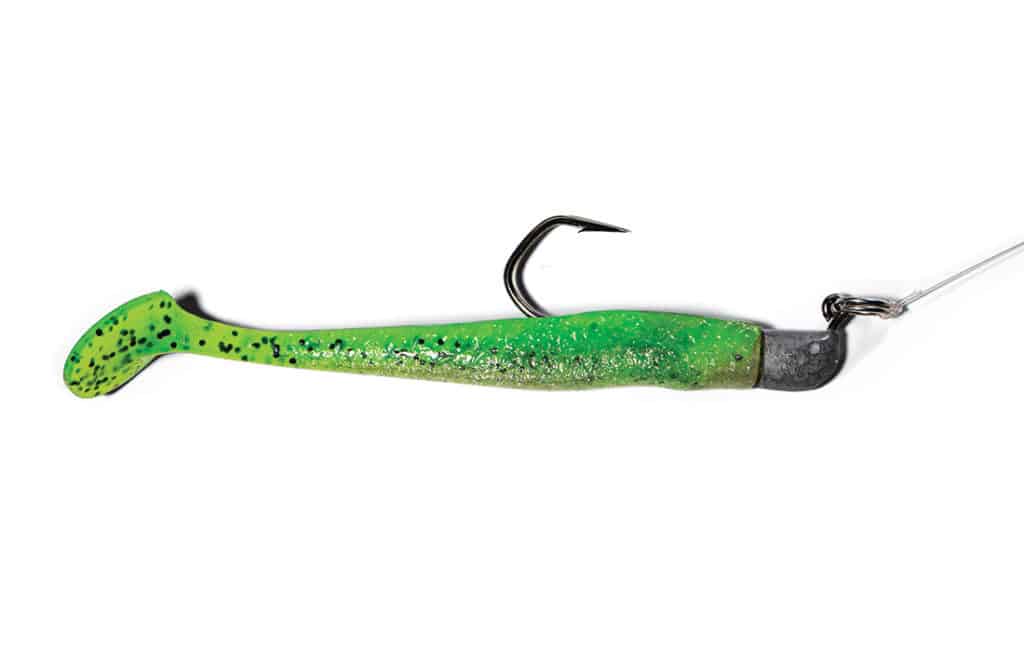
At the end of this leader system, Sprengel ties a Palomar knot to a heavy-duty split ring (with more than 100-pound-test, he uses a crimp). The lure or jig is then added to the split ring.
“For targeting all species of tuna in the Northeast, our most consistent approach is a weighted-head-and-soft-tail combination that allows you to fish actively,” says Sprengel. “For a long time, jigging and casting offshore was considered less effective than trolling or baiting, but I believe now, when positioned near a biomass of fish, jigging and casting is just as effective.”
Check Out This Jig-and-Pop Adventure
